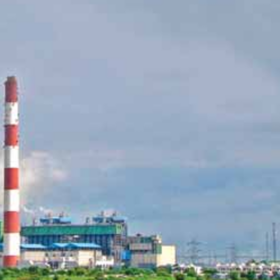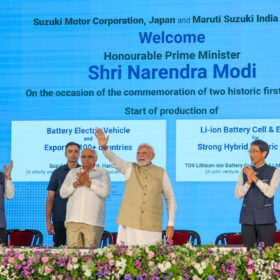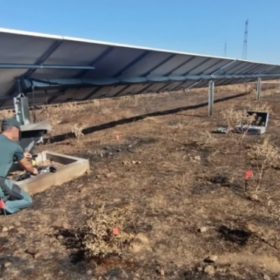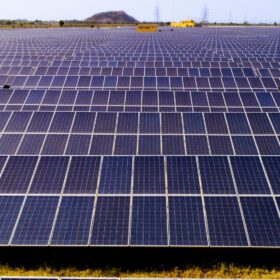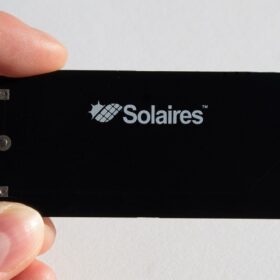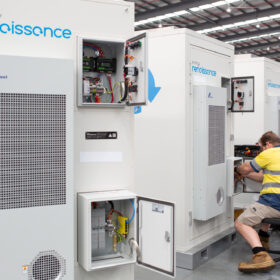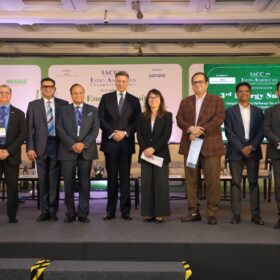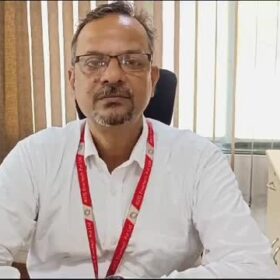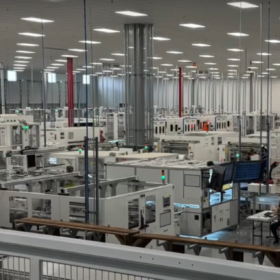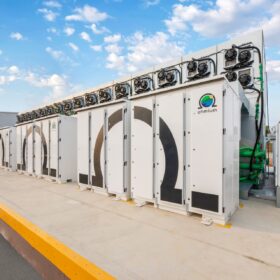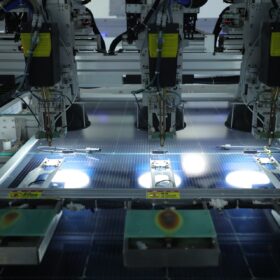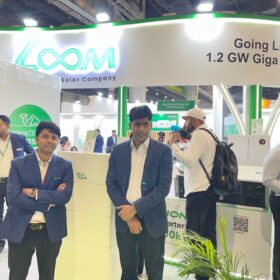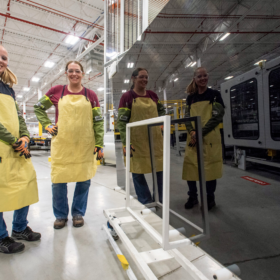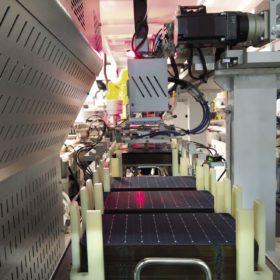Jaiprakash Power Ventures mulls 50 MW solar plant at Bina thermal site
Jaiprakash Power Ventures is considering setting up a 50 MW solar plant at its existing thermal power project site in Bina, Madhya Pradesh.
Prime Minister Narendra Modi inaugurates TDSG’s lithium battery cell, electrode manufacturing facility
Prime Minister Narendra Modi inaugurated the next phase of India’s battery ecosystem with the start of local production of battery electrodes at TDS Lithium-Ion Battery Gujarat Pvt Ltd (TDSG), Maruti Suzuki’s fellow subsidiary.
Electrical fault at PV plant triggers forest fire in Spain
A forest fire in southern Spain that burned roughly 800 hectares of pasture, crops, and oak forests originated in an electrical box of a photovoltaic plant’s tracking system, according to the Civil Guard’s Nature Protection Service (SEPRONA).
India installed 18 GW solar in first half of 2025, says Mercom report
India added 18 GW of new solar power capacity in the first half of 2025, with over 11 GW installed in the second quarter alone.
Solaires Entreprises ships indoor perovskite PV modules to first customer
Solaires Enterprises, a Canadian perovskite startup, has begun supplying indoor PV modules for integration into sensor devices, marking its first commercial shipment.
Lithium ion battery company Energy Renaissance goes into administration
The New South Wales-based lithium ion battery company Energy Renaissance has gone into administration, just months after celebrating a decade in business.
India finalizing CCUS Mission roadmap, outlay
The Union Government is finalizing the roadmap and financial outlay for the much-anticipated Carbon Capture, Utilisation and Storage (CCUS) Mission, said Rajnath Ram, Adviser for Energy, Natural Resources & Environment at government policy thinktank NITI Aayog.
India’s solar EPC evolution: Why boutique firms are attracting institutional capital
Boutique EPC companies prioritize efficiency, customization, and site-specific solutions, and they frequently outperform their larger counterparts in terms of cost-performance ratios.
Waaree Energies secures 452 MW solar module order in USA
Waaree Energies Ltd announced that its arm Waaree Solar Americas has signed the agreement with a US developer to supply 452 MW of advanced solar modules.
Ohmium unveils new electrolyzer system with compact horizontal footprint of 29.7 m²/MW
Ohmium’s Lotus Mark 3 electrolyzer system with a compact land usage area of just 29.7 m2 per MW, including space for maintenance and access, sets new industry standard for land usage efficiency.
